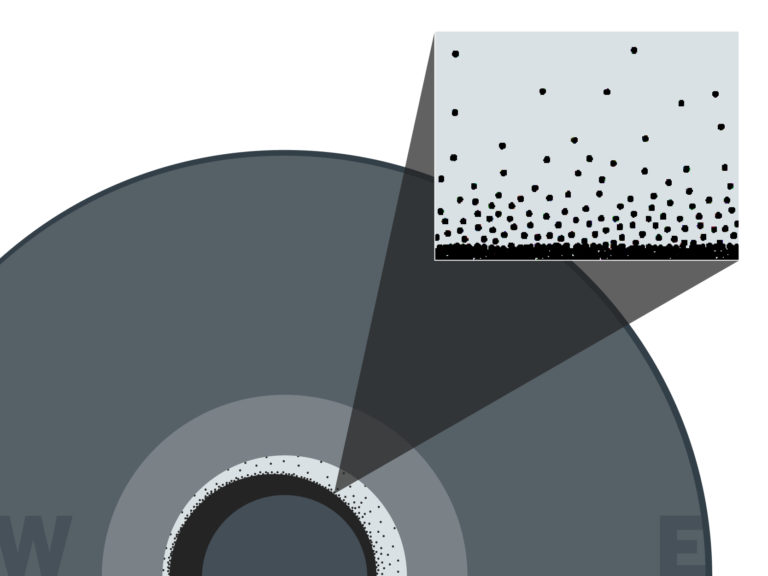Iron Snow at Earth’s Core
November 12, 2020

The Earth’s inner core is hot, under immense pressure and snow-capped, according to new research that could help scientists better understand forces that affect the entire planet.
The snow is made of tiny particles of iron, making them much heavier than any snowflake on Earth’s surface. These particles fall from the molten outer core and pile on top of the inner core, covering the inner core in piles up to 200 miles thick.
The image may sound like an alien winter wonderland. But the scientists who led the research said it is akin to how rocks form inside volcanoes. “The Earth’s metallic core works like a magma chamber that we know better of in the crust,” said Jung-Fu Lin, a professor in the Department of Geological Sciences and a co-author of the study, which was published in December 2019 in the Journal of Geophysical Research: Solid Earth. Youjun Zhang, an associate professor at Sichuan University in China, led the study. Other co-authors include Jackson School of Geosciences graduate student Peter Nelson and Nick Dygert, an assistant professor at the University of Tennessee who conducted the research during a postdoctoral fellowship at the Jackson School.
The Earth’s core can’t be sampled, so scientists study it by recording and analyzing signals from seismic waves as they pass through the Earth. Aberrations between recent seismic wave data and the data that would be expected based on the current model of the Earth’s core have raised questions. The waves move more slowly than expected as they passed through the base of the outer core, and they move faster than expected when moving through the eastern hemisphere of the top inner core.
The study proposes the iron snowcapped core as an explanation for these aberrations. The scientist S.I. Braginskii proposed in the early 1960s that a slurry layer exists between the inner and outer core, but prevailing knowledge about heat and pressure conditions in the core environment quashed that theory. However, new data from experiments on core-like materials conducted by Zhang and pulled from more recent scientific literature found that crystallization was possible and that about 15% of the lowermost outer core could be made of iron-based crystals that eventually fall down from the liquid outer core and settle on top of the solid inner core. “It’s sort of a bizarre thing to think about,” Dygert said. “You have crystals within the outer core snowing down onto the inner core over a distance of several hundred kilometers.”
The researchers point to the accumulated snow pack as the cause of the seismic aberrations. The slurry-like composition slows the seismic waves. The variation in snow pile size — thinner in the eastern hemisphere and thicker in the western — explains the change in speed.
Back to the Newsletter